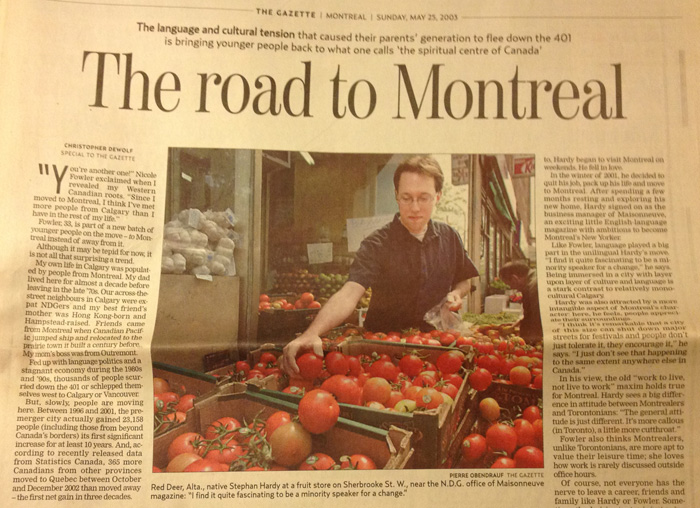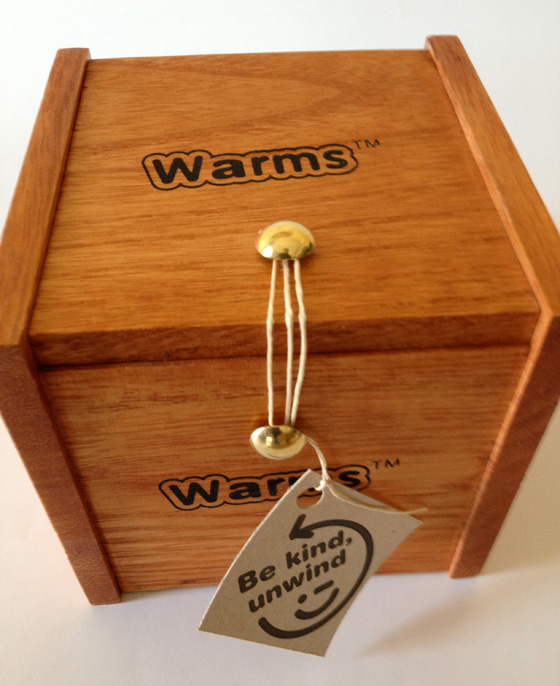This article by Christopher DeWolf was originally published in The Montreal Gazette on May 25, 2003.

“You’re another one!” Nicole Fowler exclaimed when I revealed my Western Canadian roots. “Since I moved to Montreal, I think I’ve met more people from Calgary than I have in the rest of my life.”
Fowler, 33, is part of a new batch of younger people on the move – to Montreal instead of away from it.
Although it may be tepid for now, it is not all that surprising a trend. My own life in Calgary was populated by people from Montreal. My dad lived here for almost a decade before leaving in the late ’70s. Our across-the-street neighbours in Calgary were ex-pat NDGers and my best friend’s mother was Hong Kong-born and Hampstead-raised. Friends came from Montreal when Canadian Pacific jumped ship and relocated to the prairie town it built a century before. My mom’s boss was from Outremont.
Fed up with language politics and a stagnant economy during the 1980s and ’90s, thousands of people scurried down the 401 or schlepped themselves west to Calgary or Vancouver.
But, slowly, people are moving here. Between 1996 and 2001, the pre-merger city actually gained 23,158 people (including those from beyond Canada’s borders) its first significant increase for at least 10 years. And, according to recently released data from Statistics Canada, 365 more Canadians from other provinces moved to Quebec between October and December 2002 than moved away – the first net gain in three decades.
***
Before moving from Calgary to Montreal last year, the path appeared well-worn. It seemed everyone I encountered had a brother or six friends or an old roommate who had moved to Montreal. The trend was evident upon arrival, too; a quick survey of people I’ve met reveals a lot of eastward pioneers who are bucking the trends established late in the last century.
In fact, there are a lot of new people in Montreal who come from a variety of Canadian cities, even big, booming Toronto. What makes this somewhat perplexing is that, according to the National Post, the Calgary-Edmonton corridor is the second-wealthiest region in the world. Cities like Toronto and Vancouver certainly aren’t hurting when it comes to job prospects.
So why come here?







